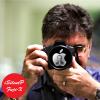Is it just me or the lowish light files are too noisy?
-
Similar Content
-
Posts
-
By JovialLich · Posted
All software is the latest between camera and app. All settings are correct on camera. I have both lossless and uncompressed RAW files on the card in the camera. I have been up and down every reddit thread to no avail and am losing my mind… I’m doing all of the right things. It even sees my camera. It just doesn’t create the “drive” for it (see attached image screenshot). Please Help!Welcome, dear visitor! As registered member you'd see an image here…
Simply register for free here – We are always happy to welcome new members!
-
Not sure how to delete threads, but I figured out what was wrong. In short, I was partially misunderstanding the view-mode's function. Also, the "+LCD Image Display" part requires that you have the Image Disp. setting set to anything but Off. Then it will display your last image on the LCD. If it's off, it's behavior will be exactly like the plain Eye Sensor setting.
-
Hi everyone I find why it did that, it was because I shot with the flash at the second curtain.
-
Welcome, dear visitor! As registered member you'd see an image here…
Simply register for free here – We are always happy to welcome new members!
Daffodils (Appalachian) Eastern Red Bud -
Does it use wi-fi when you are not specifically attempting to transfer files?
-


Recommended Posts
Join the conversation
You can post now and register later. If you have an account, sign in now to post with your account.
Note: Your post will require moderator approval before it will be visible.